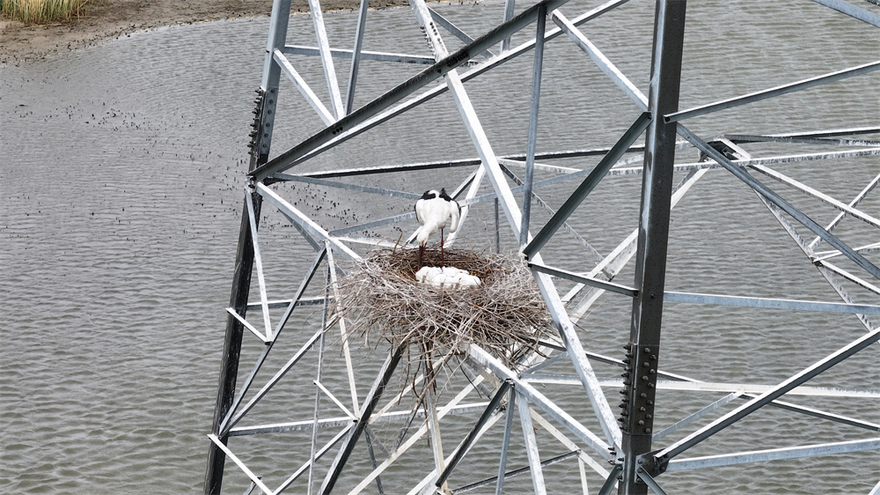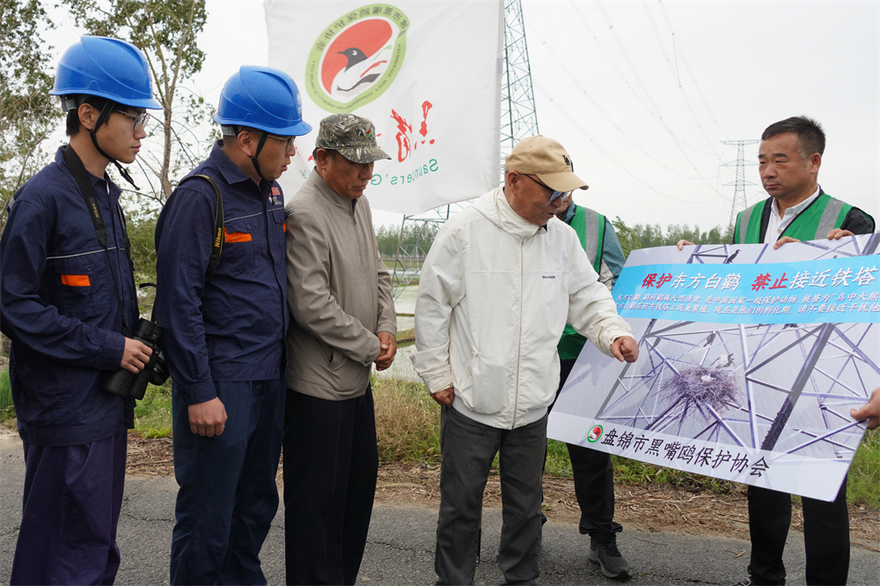Panjin City in Liaoning Province lies along the East Asian-Western Pacific Flyway, one of the world's nine major bird migration routes, hosting more than 300 bird species. These birds exhibit diverse behaviors: species like the Saunders' Gull nest near water sources, while others such as the Oriental Stork often make their homes atop transmission towers.
Balancing the safe operation of power grids with the normal activities of birds has become a new challenge for Panjin, known as an international wetland city.

An Oriental Stork and its chicks living in a nest on a transmission tower
[Photo via State Grid Panjin Power Supply Company]
Recently, operation and maintenance workers from the State Grid Panjin Power Supply Company observed power line operations using binoculars near a transmission tower located in a river area. In the middle of the tower, there was a massive bird's nest where an adult Oriental Stork was tending its four chicks.

State Grid Panjin Power Supply Company collaborating with the Panjin Saunders' Gull Conservation Society to jointly carry out bird-loving and bird-protecting activities
[Photo via State Grid Panjin Power Supply Company]
To avoid disturbing these rare birds living on the towers, the company opted for traditional methods - using high-powered binoculars and long-focus cameras instead of drones - to inspect the power grid. Once the birds leave the area, they will then employ drones and infrared thermometry to comprehensively assess the health of the towers and lines.
Over the years, the State Grid Panjin Power Supply Company has consistently recorded areas where wildlife congregates near power lines and towers. They have created an "ecological power grid map" covering 2,400 kilometers of transmission lines and nearly 7,400 transmission towers across Panjin. Additionally, they have implemented an "ecological operation and inspection plan" to actively protect these precious bird species.
Copyright ©1997- by CRI Online All rights reserved